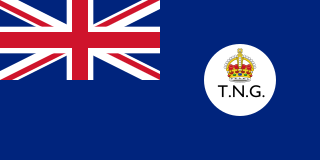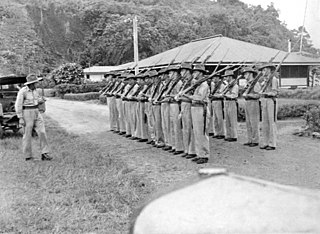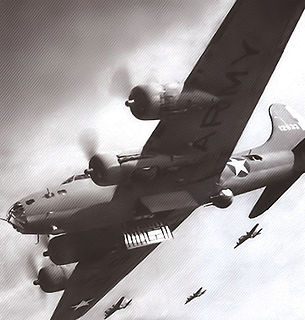
A gold rush or gold fever is a discovery of gold—sometimes accompanied by other precious metals and rare-earth minerals—that brings an onrush of miners seeking their fortune. Major gold rushes took place in the 19th century in Australia, New Zealand, Brazil, Chile, South Africa, the United States, and Canada while smaller gold rushes took place elsewhere.
Lae is the capital of Morobe Province and is the second-largest city in Papua New Guinea. It is located near the delta of the Markham River and at the start of the Highlands Highway, which is the main land transport corridor between the Highlands Region and the coast. Lae is the largest cargo port of the country and is the industrial hub of Papua New Guinea. The city is known as the Garden City and home of the University of Technology.

The Otago Gold Rush was a gold rush that occurred during the 1860s in Central Otago, New Zealand. This was the country's biggest gold strike, and led to a rapid influx of foreign miners to the area - many of them veterans of other hunts for the precious metal in California and Victoria, Australia.

Bulolo is a town in Wau-Bulolo Urban LLG, Morobe Province, Papua New Guinea. It was once an important gold dredging centre in the former Territory of New Guinea, situated on the Bulolo River, a tributary of the Markham River, about 32 km (20 mi) north-west of Wau. The town is served by Bulolo Airport. Built in June 1930, the Bulolo strip was originally 1,150 yards by 120 yards. In 2010 it had an estimated population of 20,000.

Gold mining is the extraction of gold resources by mining. Historically, mining gold from alluvial deposits used manual separation processes, such as gold panning. However, with the expansion of gold mining to ores that are not on the surface, has led to more complex extraction processes such as pit mining and gold cyanidation. In the 20th and 21st centuries, most volume of mining was done by large corporations, however the value of gold has led to millions of small, artisanal miners in many parts of the Global South.
Kainantu is a town in the Eastern Highlands of Papua New Guinea. It had some historical significance as an airstrip town during WWII. It functions primarily as a market town for local produce growers and cash croppers. It is located on the "Highlands Highway" approximately 170 kilometres (110 mi) by road from Lae and 90 kilometres (56 mi) by road from Goroka. It is 11 kilometres (6.8 mi) approx from a nearby missionary station Ukarumpa and is nearby the Aiyura valley. Kainantu has basic facilities such as a school, hospital, police station, district court, and service stations.

Newcrest Mining Limited is an Australian-based corporation which engages in the exploration, development, mining and sale of gold and gold-copper concentrate. It is Australia's leading gold mining company and its operations have expanded beyond Australia, for example Indonesia, thus becoming a prominent international mining corporation. Newmont Mining Corporation initially started the company as a subsidiary in 1966. The subsidiary became Newmont Holdings Pty Ltd in 1980 and in 1990 acquired 100 per cent of Australmin Holdings Ltd taking the current name.

Morobe Province is a province on the northern coast of Papua New Guinea. The provincial capital and largest city is Lae. The province covers 33,705 km2, with a population of 674,810, and since the division of Southern Highlands Province in May 2012 it is the most populous province. It includes the Huon Peninsula, the Markham River, and delta, and coastal territories along the Huon Gulf. The province has nine administrative districts. At least 101 languages are spoken, including Kâte and Yabem language. English and Tok Pisin are common languages in the urban areas, and in some areas pidgin forms of German are mixed with the native language.

The Territory of New Guinea was an Australian-administered United Nations trust territory on the island of New Guinea from 1914 until 1975. In 1949, the Territory and the Territory of Papua were established in an administrative union by the name of the Territory of Papua and New Guinea. That administrative union was renamed as Papua New Guinea in 1971. Notwithstanding that it was part of an administrative union, the Territory of New Guinea at all times retained a distinct legal status and identity until the advent of the Independent State of Papua New Guinea.

The Battle of Wau, 29 January – 4 February 1943, was a battle in the New Guinea campaign of World War II. Forces of the Empire of Japan sailed from Rabaul and crossed the Solomon Sea and, despite Allied air attacks, successfully reached Lae, where they disembarked. Japanese troops then advanced overland on Wau, an Australian base that potentially threatened the Japanese positions at Salamaua and Lae. A race developed between the Japanese moving overland, hampered by the terrain, and the Australians, moving by air, hampered by the weather. By the time the Japanese reached the Wau area after a trek over the mountains, the Australian defenders had been greatly reinforced by air. In the battle that followed, despite achieving tactical surprise by approaching from an unexpected direction, the Japanese attackers were unable to capture Wau.
The Susuami language is a heavily endangered Papuan language, spoken in the resettlement village of Manki along the upper Watut River, Morobe Province, Papua New Guinea.

Mining in Papua New Guinea is an important part of the Papua New Guinea economy.

The New Guinea Volunteer Rifles (NGVR) was an infantry battalion of the Australian Army. It was initially raised as a unit of the Militia from white Australian and European expatriates in New Guinea upon the outbreak of the Second World War in 1939, before being activated for full-time service following the Japanese landings in early 1942. NGVR personnel then helped rescue survivors of Lark Force from Rabaul in February and March 1942. Between March and May, the NGVR monitored the Japanese bases which had been established in the Huon Gulf region, being the only Allied force in the area until the arrival of Kanga Force at Wau in May. The battalion subsequently established observation posts overlooking the main approaches and reported on Japanese movements.

Lae Airfield is a former World War II airfield and later, civilian airport located at Lae, Morobe Province, Papua New Guinea. The airport was closed in the 1980s, in favour of Lae Nadzab Airport, which was able to accommodate larger jet aircraft. The airport was known as Lae Drome or Lae Aerodrome

Gold mining in Western Australia is the third largest commodity sector in Western Australia, behind iron ore and petroleum, with a value of A$11.9 billion.
The Morobe goldfield is in Morobe, Papua New Guinea, and mined gold. It was the largest employer of indentured labour on the island at one time, employing many Biangai people. On 30 June 1936 there were 13,121 labourers in Morobe as a whole, 6816 of whom were classified as involved in mining at Wau and Bulolo. But that was the limit of local involvement until 1957 when the Administration began to issue miner's permits to Papua New Guineans. By this time the peak of alluvial production was past, but from this point the proportion of the total in local hands rose to 80% by 1975, according to a 1975 analysis of buying records.

As the township of Lae, in Morobe Province, Papua New Guinea is a relatively new entity, the history of the Lae environs is much older.
The Coromandel Gold Rushes on the Coromandel Peninsula and around the nearby towns of Thames and Waihi in New Zealand in the nineteenth century were moderately successful. Traces of gold were found about 1842. A small find was made near Coromandel in 1852; and a larger find in August 1867 when there was a modest rush. But Thames acquired a reputation for speculative holding of unworked ground despite regulations designed to check it, and some miners left for Queensland. Most of the gold was in quartz reefs rather than in more accessible alluvial deposits and had to be recovered from underground mines and extracted using stamping batteries.

Bulolo United, known briefly as MMJV Bulolo United for sponsorship reasons, is a semi-professional Papua New Guinea association football team based in Lae in the Morobe Province. The club was founded sometime before 1987.

Flora Shaw Stewart (1886–1979), better known as 'Ma' Stewart, was a popular pioneering hotel owner in the Territory of Papua and the Territory of New Guinea from 1920 until 1979.

















